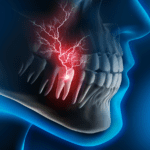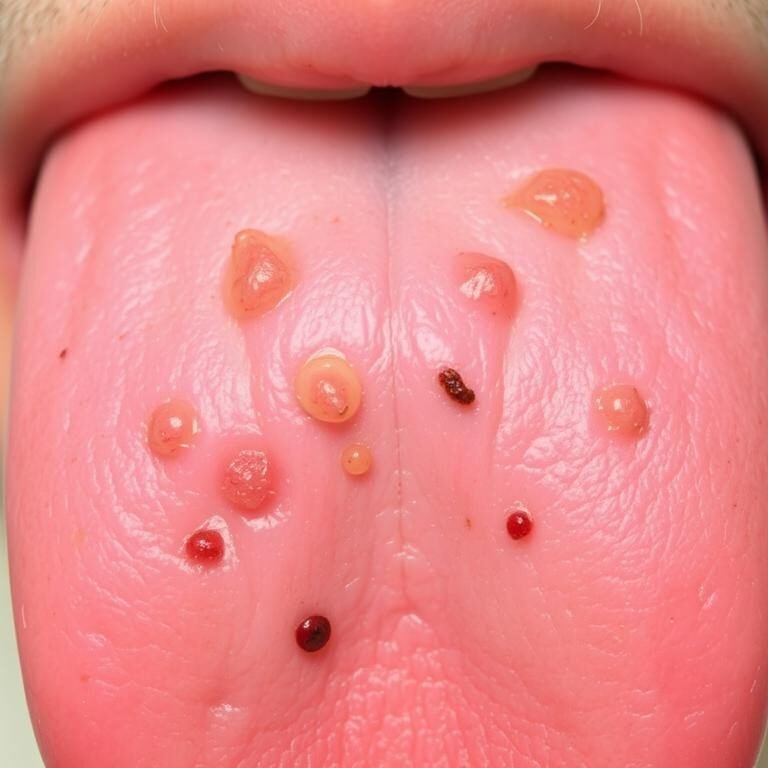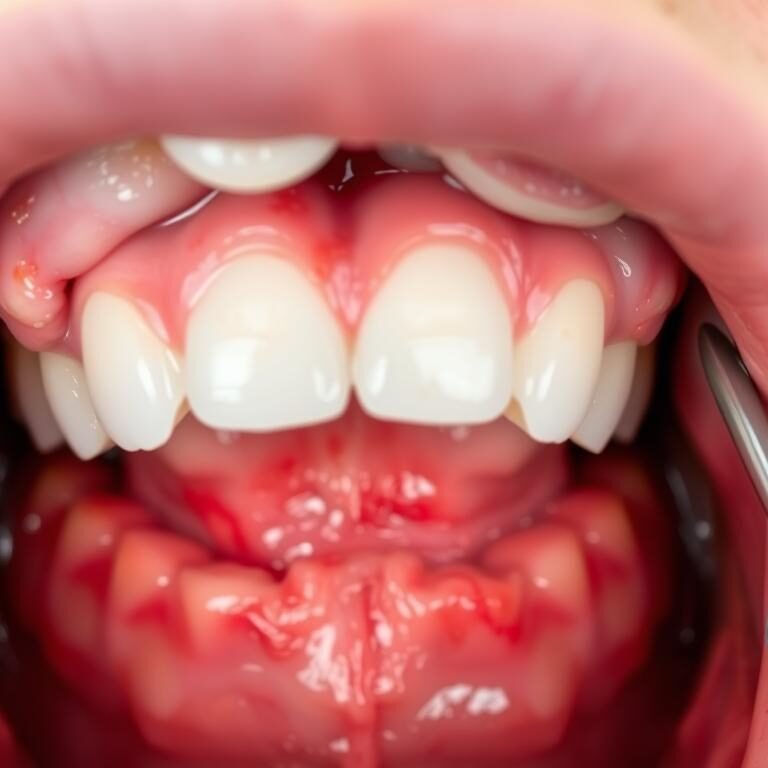Table of Contents
Incisors: The Frontline for Biting and Cutting Food
The incisors, located at the front of the mouth, are the first teeth that come into contact with the food we eat. These sharp-edged teeth serve as the frontline for biting and cutting our food into manageable pieces. With their thin, flat surface and sharp edges, incisors are specifically designed to facilitate the initial process of breaking down food.
The incisors play a crucial role in our ability to eat and enjoy a wide variety of foods. Their sharpness allows for efficient slicing through meat and other tougher textures, while their broad surface area helps in gripping and tearing softer foods like fruits and vegetables. Without properly functioning incisors, our ability to bite and chew would be greatly hindered, affecting not only our enjoyment of food but also our overall digestion and nutrition.

In addition to their practical function in eating, incisors also contribute to the aesthetic appearance of our smile. Located at the front of our mouth, they are often the most visible teeth when we speak or smile. Their healthy and well-maintained appearance enhances our overall facial aesthetics and boosts our self-confidence.
Overall, the incisors are not only essential for breaking down food but also for maintaining proper oral health and enhancing our smile. Taking care of these frontline teeth through regular brushing, flossing, and dental check-ups is crucial in ensuring their optimal function and longevity.
| Type of Teeth | Location | Purpose |
|---|---|---|
| Incisors | Front | Cutting and chopping food, biting |
| Canines | Pointed | Tearing and ripping food, gripping |
| Premolars (Bicuspids) | Between | Grinding, crushing, and tearing food |
| Molars | Back | Crushing and grinding tough foods, chewing |
| Wisdom Teeth | Back | No consistent function; often removed due to crowding |
Canines: The Sharp Helpers for Tearing and Gripping
Canines, also known as the “eye teeth” or “fangs,” play a crucial role in our dental structure. Positioned on either side of the incisors, these sharp and pointed teeth are specialized for tearing and gripping food. With their pointed tips and long roots, canines are well-equipped to pierce through tough substances and hold onto them securely during the chewing process.
Their unique shape and function make canines an integral part of our dental anatomy. As we bite into food, these teeth are responsible for tearing it into smaller, more manageable pieces. This tearing action not only aids in the initial breakdown of food but also allows for better digestion as it increases the surface area available for enzymes to work on. Additionally, canines assist in stabilizing the jaw and maintaining proper alignment of the teeth, ensuring effective chewing and grinding throughout the oral cavity.
Overall, canines serve as the sharp helpers in our dental arsenal, facilitating the tearing and gripping necessary for efficient food consumption. Their strength and precision make them indispensable in our oral health, contributing to the overall well-being of our dental structure and digestive system.
Premolars: The Versatile Teeth for Chewing and Grinding
Premolars: The Versatile Teeth for Chewing and Grinding
Premolars are an essential part of our dental arch, situated between the canines and the molars. These teeth serve a vital role in the process of chewing and grinding food, aiding in the breakdown of our meals for digestion. Their unique shape and structure make them particularly well-suited for this important task.
With their broad and flat chewing surface, premolars are designed to efficiently grind and crush food. Their multiple cusps, or pointed projections, provide a powerful biting force that helps break down tough and fibrous foods. This versatility allows premolars to handle a wide range of food textures and ensures effective mastication, which is crucial for the proper digestion and absorption of nutrients.

In addition to their primary function in chewing, premolars also contribute to the alignment and stability of our dental arch. Their strategic position in the mouth helps maintain the balance of our bite, preventing the excessive wear and strain that can lead to dental issues such as malocclusion. In cases where teeth are lost and not replaced, premolars may even play a role in supporting dental prosthetics, ensuring a functional and aesthetically pleasing oral cavity.
In conclusion, premolars are a highly adaptable part of our dental anatomy, with their primary role in chewing and grinding food. Their unique structure and placement make them key players in maintaining dental alignment and stability. Appreciating the versatility of these teeth highlights the importance of their care and preservation for overall oral health.
Molars: The Powerhouses for Crushing and Grinding Food
The molars, located at the back of the mouth, are the powerhouses when it comes to the task of crushing and grinding food. These robust teeth play a critical role in the process of mastication, breaking down food into smaller, more manageable pieces for digestion. With their large surface area and sturdy structure, molars are designed to withstand the substantial forces required for this important function.
Equipped with multiple cusps and grooves, molars possess an intricate architecture that enhances their chewing capabilities. Their occlusal surfaces are covered with rugged cusps, which interlock with the opposing teeth, allowing for efficient grinding and crushing actions. This unique arrangement enables the molars to effectively process a wide variety of foods, from tough meats to fibrous vegetables.
Additionally, molars are supported by a strong foundation of roots, firmly anchored into the jawbone. This stability ensures that the molars can exert the necessary force to break down food particles, enabling proper digestion and nutrient absorption. It is the strength and resilience of the molars that allow us to enjoy a wide range of foods and maintain optimal oral health.
Stay tuned for the next section of our dental series as we delve into the fascinating topic of wisdom teeth and their uncertain purpose.
Wisdom Teeth: The Latecomers with Uncertain Purpose
Wisdom teeth, also known as third molars, are the latecomers to our mouths. They typically make their appearance in our late teens or early twenties, long after our other permanent teeth have erupted. However, their purpose remains somewhat uncertain.
In some cases, wisdom teeth can emerge and align properly with the rest of our teeth, serving as functional chewing tools. However, more often than not, these teeth become impacted – trapped beneath the gum line or against other teeth – due to insufficient space in the mouth. This impaction can lead to a host of dental issues, such as pain, infection, and damage to adjacent teeth. Therefore, many dental professionals recommend having these unnecessary teeth removed preventatively, before they cause problems.
While the precise significance of wisdom teeth may still be debated, their potential for complications warrants careful consideration. If you’re experiencing discomfort or have concerns about your wisdom teeth, consulting with a dentist can provide valuable guidance to help you make informed decisions about your oral health.

Enamel: The Protective Shield of Your Teeth
Enamel plays a crucial role in protecting our teeth from the wear and tear of daily use. As the outermost layer, it acts as a shield against the forces of biting, chewing, and grinding. Made up of a mineralized substance called hydroxyapatite, enamel is incredibly strong and durable, even stronger than bone. In fact, it is the hardest substance in the human body. The unique composition of enamel allows it to withstand the forces exerted during chewing and also protects our teeth from temperature extremes and harmful bacteria.
The protective properties of enamel are essential in maintaining good oral health. It acts as a barrier, preventing bacteria and acids from reaching the sensitive layers beneath, such as the dentin and pulp. If the enamel becomes compromised, either through erosion or decay, it can lead to a host of dental problems, including tooth sensitivity, cavities, and even tooth loss. Therefore, it is vital to take proper care of our enamel by practicing good oral hygiene habits, such as regular brushing, flossing, and dental check-ups. Additionally, reducing the consumption of acidic foods and beverages can help preserve the integrity of our enamel and ensure the longevity of our teeth.
Dentin: The Supportive Layer Beneath the Enamel
Dentin, the supportive layer beneath the enamel, plays a crucial role in maintaining the integrity and strength of our teeth. Composed of living cells called odontoblasts, dentin is a calcified tissue that surrounds the central pulp of the tooth. Its primary function is to provide support and protection to the delicate pulp, as well as to transmit sensory stimuli such as hot and cold sensations.
Interestingly, dentin is significantly softer than enamel, making it more susceptible to decay and wear. However, it also possesses a remarkable ability to regenerate and repair itself when damaged, thanks to the continuous activity of the odontoblasts. This self-healing property of dentin helps to maintain the vitality and health of our teeth.
In addition to its support and reparative functions, dentin also plays a critical role in tooth sensitivity. When the protective layer of enamel wears down or diminishes, the dentin becomes exposed, leading to increased sensitivity to temperature and certain foods. Understanding and protecting this supportive layer is essential in maintaining optimal oral health and preventing the discomfort associated with tooth sensitivity.

Pulp: The Vital Core of Your Teeth
The pulp, located at the center of your teeth, is a vital core that plays a crucial role in maintaining their health and function. Made up of connective tissues, blood vessels, and nerves, the pulp acts as a lifeline for your teeth, providing them with essential nutrients and oxygen. It also serves as a sensor, enabling you to feel hot, cold, and other sensations in your teeth.
The pulp not only nourishes the teeth but also helps in their development and growth. During tooth formation, the pulp produces dentin, the hard tissue that surrounds it and makes up the bulk of the tooth structure. This dentin acts as a supportive layer, providing strength and protection to the tooth.
When the pulp becomes infected or damaged due to decay, trauma, or other dental conditions, it can cause severe pain and discomfort. In such cases, a dental procedure called a root canal may be necessary to remove the infected pulp and restore the tooth’s health. It is crucial to prioritize proper oral hygiene and seek regular dental check-ups to prevent any issues with the pulp and maintain the overall well-being of your teeth.
Cementum: The Essential Tissue Connecting Your Teeth to the Jawbone
Cementum plays a crucial role in dental health as it serves as the essential tissue connecting our teeth to the jawbone. Located below the gum line, cementum acts as a protective layer, covering the tooth’s root and helping to anchor it securely within the jaw. Its composition is unique, consisting of mineralized connective tissue that is both strong and resilient.
In addition to providing structural support, cementum also plays a vital role in maintaining the health of our teeth. It contains specialized cells known as cementoblasts, which constantly produce new layers of cementum throughout our lives. This continuous growth helps to repair any damage or wear that may occur over time, ensuring the stability and longevity of our teeth. Without the presence of cementum, our teeth would not be able to withstand the forces of biting and chewing, and the risk of tooth loss would significantly increase.
Overall, cementum’s role as the essential tissue connecting our teeth to the jawbone cannot be overstated. Its presence not only provides stability and support but also contributes to the overall maintenance of good oral health.
Periodontal Ligament: The Elastic Structure Anchoring Your Teeth
The periodontal ligament, also known as the PDL, plays a crucial role in anchoring your teeth to the jawbone. This elastic structure is located between the tooth root and the bone, providing support and stability to your teeth. Without the periodontal ligament, your teeth would be prone to shifting or even falling out.
One of the main functions of the periodontal ligament is to absorb and distribute the forces generated during biting and chewing. This helps to prevent excessive pressure on any one tooth, reducing the risk of tooth fractures or damage. Additionally, the PDL enables microscopic movement of the teeth, allowing them to adjust and align slightly in response to changes in bite force or position.
Moreover, the periodontal ligament acts as a sensory organ, providing feedback to your brain about the position and pressure on your teeth. This feedback is important for maintaining proper balance and coordination during chewing and speaking. Furthermore, the PDL contributes to the formation and maintenance of the surrounding jawbone and supports the overall health of your oral cavity.
In conclusion, the periodontal ligament is an essential component of your dental anatomy, playing a vital role in anchoring your teeth, distributing forces during biting and chewing, providing sensory feedback, and maintaining the health and integrity of your oral cavity. Its elasticity and responsiveness contribute to the stability, function, and longevity of your teeth.
Gingiva: The Pink Tissue Enveloping the Neck of Your Teeth
Gingiva, also known as gum tissue, plays a crucial role in maintaining the health and integrity of your teeth. This pink tissue envelopes the neck of your teeth, forming a protective barrier against bacteria and foreign particles. It not only provides support and stability to the teeth but also serves as a cushion to absorb the forces generated during biting and chewing.
Healthy gingiva is firm, pink, and tightly adhered to the underlying bone. It acts as a seal, preventing the entry of harmful bacteria and food debris into the delicate structures beneath. However, poor oral hygiene can lead to gum disease, causing the gums to become inflamed, swollen, and even bleed. This condition, known as gingivitis, can progress to more severe forms such as periodontitis if left untreated.
As a knowledgeable dentist, it is essential to emphasize the importance of maintaining good oral hygiene practices, including regular brushing, flossing, and professional dental cleanings. By caring for your gingiva, you can minimize the risk of gum disease and its associated complications. Remember, healthy gums are an essential foundation for a healthy smile.
Dental Plaque: The Sticky Film That Causes Tooth Decay
Dental plaque is a sticky film that can cause significant damage to our teeth if left unchecked. It is composed of bacteria, food particles, and saliva, which combine to form a thin, colorless layer on the surface of our teeth. When we consume sugary or starchy foods, the bacteria in plaque feed on these substances and produce acids that erode tooth enamel, leading to cavities and tooth decay.
Regular brushing and flossing are essential in removing dental plaque and preventing its harmful effects. Failure to remove plaque can result in its hardening into tartar, which can lead to gum disease, tooth loss, and other oral health problems. Maintaining a consistent oral hygiene routine, along with regular dental check-ups, is key to controlling plaque buildup and preserving the health of our teeth and gums.
Remember, prevention is always better than treatment when it comes to dental plaque. By adopting proper oral hygiene practices and seeking professional dental care, we can effectively combat the negative impact of plaque and enjoy a healthy smile. Stay tuned for the next part of our dental health series, where we will explore the consequences of tartar and gum disease.
Tartar: The Hardened Plaque That Can Lead to Gum Disease
Tartar, also known as dental calculus, is a hardened form of plaque that can have detrimental effects on your dental health. It forms when plaque, a sticky film of bacteria and food particles, is not properly removed through regular brushing and flossing. Over time, this plaque mineralizes and hardens, forming tartar on the teeth.
The presence of tartar can lead to various oral health problems, with gum disease being one of the most significant concerns. As tartar builds up along the gumline, it creates a rough surface that serves as a haven for bacteria to thrive. These bacteria release toxins that irritate the gums, leading to inflammation and the early stages of gum disease, known as gingivitis.
If left untreated, gingivitis can progress to a more serious condition called periodontitis, in which the gums begin to pull away from the teeth and form pockets. These pockets can become infected and filled with bacteria, causing the further destruction of gum tissue, tooth loss, and even bone loss.
Regular dental cleanings and good oral hygiene practices are essential in preventing the buildup of tartar. However, once tartar has formed, it can only be effectively removed by a dental professional through a process called scaling and root planing. Therefore, it is crucial to schedule regular dental visits to ensure the early detection and treatment of tartar, preventing its harmful impact on your oral health.
Malocclusion: The Misalignment of Teeth and Its Consequences
Malocclusion, or the misalignment of teeth, can have various consequences on both oral health and overall well-being. One of the potential consequences of malocclusion is difficulty in biting and chewing food properly. When teeth are not properly aligned, it can result in an uneven distribution of force during eating, leading to inefficient chewing and digestion. This can put additional strain on the jaw muscles and joints, potentially causing discomfort and pain.
Another consequence of malocclusion is the increased risk of tooth decay and gum disease. Misaligned teeth can be harder to clean effectively, as certain areas may be more difficult to reach with a toothbrush or floss. This can result in the buildup of dental plaque, a sticky film that contains harmful bacteria. Over time, plaque can contribute to tooth decay and the formation of tartar, a hardened plaque that can lead to gum inflammation and periodontal disease.
In addition to these oral health consequences, malocclusion can also affect an individual’s self-esteem and confidence. Crooked or misaligned teeth may be visible when smiling or speaking, which can impact one’s appearance and self-image. This can lead to feelings of self-consciousness and may affect social interactions and overall quality of life.
Addressing malocclusion early on is essential to minimize these potential consequences. Consulting with a dental professional, such as an orthodontist, can help determine the most appropriate treatment options. Orthodontic interventions, such as braces or aligners, can effectively correct malocclusion and improve both oral health and aesthetic outcomes. Regular dental check-ups and proper oral hygiene practices are also crucial in maintaining optimal oral health, regardless of the presence of malocclusion.
Tooth Eruption: The Natural Process of Teeth Growing and Emerging
Tooth eruption is a natural process that occurs in stages as children’s teeth grow and emerge from the gums. It is a fascinating journey that begins during infancy and continues into adolescence, shaping the oral health and dental development of individuals. Each tooth type follows a specific pattern of eruption, starting with the foremost incisors and ending with the elusive wisdom teeth.
The eruption process begins as soon as a baby is born, with primary teeth, also known as baby teeth, starting to develop beneath the gums. Typically, the first set of incisors erupts around six months of age, followed by the canines, premolars, and molars over the coming years. As children grow, their primary teeth make way for permanent teeth, leading to a mix of baby and adult teeth during the transition period. This dynamic process involves the resorption of baby teeth roots and the gradual eruption of permanent teeth, guided by complex mechanisms that ensure proper alignment and occlusion.
Understanding tooth eruption is vital for parents and caregivers, as it allows for proactive oral healthcare and timely detection of any potential issues. Regular dental check-ups and monitoring the eruption sequence can help identify anomalies such as delayed eruption, missing teeth, or overcrowding. By closely monitoring this natural process, dental professionals can offer appropriate interventions when necessary, promoting optimal oral health and supporting the proper growth and development of a child’s teeth.
| Tooth Type | Approximate Eruption Time |
|---|---|
| Central Incisors | 6-10 months |
| Lateral Incisors | 9-13 months |
| Canine Teeth | 16-22 months |
| First Molars | 13-19 months |
| Second Molars | 25-33 months |
Tooth Loss: The Potential Consequences and
Tooth loss can have significant consequences on your oral health and overall well-being. When a tooth is lost, it not only affects your ability to bite and chew properly but can also impact your speech and confidence. Additionally, the empty space left by a missing tooth can lead to a shift in the alignment of your remaining teeth, causing bite problems and increased risk of decay and gum disease.
One of the most immediate consequences of tooth loss is the difficulty in eating certain foods. Your front teeth play a crucial role in biting and cutting food, while the canines are responsible for tearing and gripping. When these teeth are missing, it can be challenging to enjoy a varied and nutritious diet. This can lead to inadequate nutrition, digestive issues, and even affect your overall health in the long run.
Furthermore, tooth loss can affect your speech patterns. Your teeth, especially the front ones, help in the proper pronunciation of sounds and words. When teeth are lost, it can cause a lisp or difficulty in articulating certain words and sounds, affecting your ability to communicate effectively.
In terms of aesthetics, tooth loss can have a significant impact on your self-esteem and confidence. Whether it’s a single missing tooth or multiple teeth, the gaps in your smile can make you feel self-conscious and hesitant to smile or speak in public.
Beyond these immediate consequences, tooth loss can also have long-term effects on your oral health. When a tooth is lost, the neighboring teeth can start to shift and move into the empty space. This can lead to misalignment, bite problems, and make it difficult to clean between teeth effectively. As a result, plaque and bacteria can accumulate, increasing the risk of cavities, gum disease, and even bone loss in the jaw.
In conclusion, tooth loss is not just a cosmetic concern; it can have significant consequences on your oral health and overall well-being. From difficulty in eating and speaking to increased risk of dental issues, the impact of tooth loss goes beyond the visible gaps in your smile. It is crucial to seek prompt dental care and explore appropriate tooth replacement options to mitigate these consequences and maintain a healthy and functional smile.
What are the potential consequences of tooth loss?
Tooth loss can lead to difficulties in biting and chewing food, speech problems, changes in facial appearance, shifting of remaining teeth, jawbone deterioration, and an increased risk of gum disease.
How do incisors contribute to biting and cutting food?
Incisors are the front teeth that are sharp and flat-edged, making them ideal for biting into food and cutting it into smaller, more manageable pieces.
What is the purpose of canines in our mouth?
Canines, also known as “eye teeth,” have pointed tips and are designed to tear and grip food, making them especially useful in tearing tough or fibrous foods.
What role do premolars play in our oral functions?
Premolars are located between the canines and molars, and they have a flat surface with ridges that help in chewing and grinding food into smaller particles.
How do molars contribute to the process of food consumption?
Molars, located at the back of the mouth, have large and flat surfaces with prominent ridges, allowing them to exert significant force when crushing and grinding food.
What is the purpose of wisdom teeth?
Wisdom teeth, also known as third molars, are the last teeth to emerge in the mouth. While their purpose is uncertain, they can potentially assist with chewing if properly aligned and healthy.
What is the function of enamel?
Enamel is the hard outer layer of the tooth that acts as a protective shield against decay and physical damage.
What lies beneath the enamel in our teeth?
Dentin is the layer beneath the enamel and provides support and strength to the tooth structure.
What is the central component of a tooth?
The pulp, located in the core of the tooth, contains blood vessels, nerves, and connective tissues, playing a vital role in tooth health.
How does cementum connect our teeth to the jawbone?
Cementum is the specialized tissue that covers the root of the tooth, anchoring it to the jawbone with the help of the periodontal ligament.
What is the purpose of the periodontal ligament?
The periodontal ligament is an elastic structure that attaches the tooth to the jawbone, providing support and allowing slight movement for chewing.
What is the role of gingiva in our oral health?
Gingiva, commonly referred to as gums, surrounds the neck of the tooth, protecting the underlying structures and providing a seal to prevent bacteria from entering.
What is dental plaque and how does it affect our teeth?
Dental plaque is a sticky film that forms on the teeth, consisting of bacteria and food particles. If not properly removed, it can lead to tooth decay and gum disease.
What happens when dental plaque hardens and forms tartar?
Tartar, or dental calculus, is the hardened form of dental plaque. It can irritate the gums and cause gum disease if not removed through professional cleaning.
What is malocclusion and what consequences can it have?
Malocclusion refers to the misalignment of teeth, which can lead to various issues such as difficulty in chewing, speech problems, increased risk of tooth decay, and an uneven bite.
What is tooth eruption?
Tooth eruption is the natural process of teeth growing and emerging in the mouth. It typically begins during infancy with the eruption of primary teeth, followed by permanent teeth in childhood and adolescence.
How can tooth loss impact our oral health?
Tooth loss can have several consequences, including difficulties in eating and speaking, changes in facial appearance, shifting of remaining teeth, jawbone deterioration, and an increased risk of gum disease.











